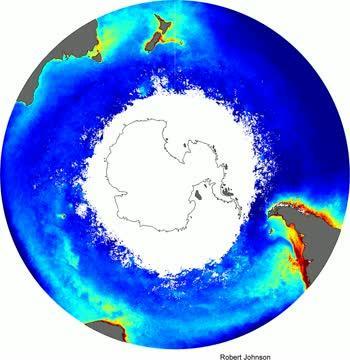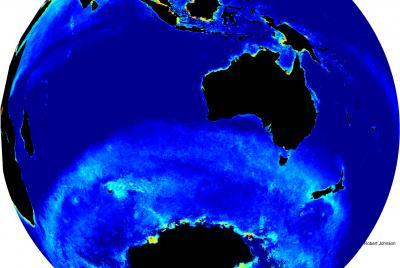So it was important to understand why existing ocean colour satellites systematically underestimated the chlorophyll concentration (a proxy for phytoplankton biomass) of the Southern Ocean and Antarctica.
To get the observations needed to make valid comparisons and develop the algorithm, the researchers used more than 1000 Southern Ocean phytoplankton samples collected over 10 years and compared these to satellite measurements.
The majority of the samples used in this study were collected by the French Antarctic vessel MV L'Astrolabe through a collaborative and long-term monitoring program between the CSIRO, the Australian Antarctic program, and the French Antarctic Program.
Once this observational data was collected, the new algorithm was used to process satellite data and make comparisons. It quickly became clear that the algorithm produced a much closer estimate of phytoplankton numbers than past satellite measurements.
"Our improved satellite chlorophyll algorithms will be used to produce higher-accuracy observations on the vitally important phytoplankton of the Southern Ocean and Antarctica," said Assoc Prof Peter Strutton.
"This will go a long way towards improving our understanding of how the Southern Ocean works and how the movement of carbon is changing in these remote waters."
The improved data will also be made freely available to the global research community through the Integrated Marine Observing System (IMOS).

This video shows the concentration of phytoplankton observed by satellites in the Southern Ocean over the summer months.
(Photo Credit: Robert Johnson)

This still image is showing the concentrations of phytoplankton observed by satellites in the Southern Ocean.
(Photo Credit: Robert Johnson)
Source: University of New South Wales